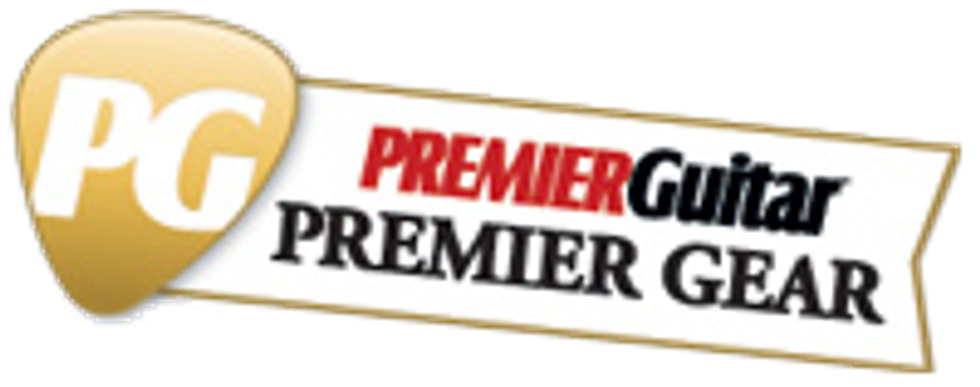Until fairly recently, jazzers had few options for affordable, high-quality guitars. But Eastman—which started out in the early 1990s as a maker of violin-family instruments—now offers a range of jazz boxes that deliver nice playability and tones at relatively accessible prices. As Eastman’s line has grown, it has developed guitars for just about every style, from traditional, fully carved 17" archtops for an old-school sound to compact, laminated thinline electrics for those who align more with, say, Larry Carlton’s take on the genre. For this review, we checked out the AR371CESB, an Eastman heavily inspired by the Gibson ES-175, which has been favored by jazz players and a few notable rockers over the years. Like the guitar that serves as this Eastman’s template, it has tones rich and varied enough to tantalize both types of players—and at a price that will tempt a lot of players who’ve rarely considered a big archtop experiment worth the price.
Classic Lines
Unveiled in 1949, Gibson’s ES-175 has been a jazz workhorse for years, preferred by improvisers like Jim Hall, Joe Pass, and Pat Metheny, and virtuosic rockers like Steve Howe and Mark Knopfler. The model has gone through a lot of pickup changes over its lifetime, including single- and twin-P-90 versions, as well as and single- and twin-humbucker incarnations. The 24 3/4"-scale Eastman AR371CESB uses a single humbucker in the neck position of its 16" laminated maple body, which also features a florentine cutaway that meets up with a 20-fret rosewood fretboard inlaid with split parallelogram markers—all of which is very Gibson-esque. The Eastman does deviate from convention on several important counts, however. It uses a 3-piece maple neck with a 1.75" nut rather than the traditional one-piece mahogany neck with a 1.687" nut. The Eastman also uses 5-ply binding on the top and 3-ply binding on the back, whereas the ES-175 has 3-ply on both.
As seems to be typical of Eastman instruments, craftsmanship on the Chinese-built AR371CESB is quite good overall, though it’s not entirely without issues. The Dunlop 6130 fretwire is smoothly polished and free of rough ends, the nitrocellulose lacquer finish is applied evenly (except at the neck joint, where it gets a bit thick), and the sunburst finish has a cool vintage vibe. But there are areas where the binding could have been more cleanly scraped, and on the back of the headstock a bit of finish chipped off near the 1st-string tuner, which might have been installed too tightly. About the only other disappointment is the hardshell case, which has a relatively flimsy-feeling lid and an under-padded interior. As nice as this guitar is, a gigging guitarist would be wise to swap this case for a more durable option.
Excellent Playability and Sound
When I first lifted the Eastman from its case, my disappointments about its container dis-appeared upon discovering how refreshingly lightweight the guitar is. I strummed a few open chords and found the guitar to be very loud and lively for a laminated electric archtop. It’s also unexpectedly and appealingly bright, with an impressive capacity for midrange.
Ratings
Pros:
Top-notch sound and playability. Classic, handsome look.
Cons:
Finer craftsmanship details could be better.
Tones:
Playability:
Build/Design:
Value:
Street:
$780
Eastman Guitars
eastmanguitars.com
The neck is on the slender side, but the wider nut gives you room to range, and the fast, low action enables execution of sustaining single notes, deep bends, and complex chord shapes up to the 20th fret and across all six strings. Intonation on our review guitar was spot-on and there were no dead areas on the neck, and when I played uninterrupted for a half hour I didn’t experience any of the fret-hand fatigue I often encounter on a 1940s archtop.
With just one pickup, it’s perhaps unsurprising that the AR371CESB doesn’t pack a staggering assortment of tones, but it is an excellent-sounding guitar nonetheless. Through a Fender Pro Junior, it sounded full, articulate, and—unlike some guitars in this category—not muddy in the slightest. While the guitar’s inherent brightness adds welcome definition to single-note lines and complex chords, it can be easily deemphasized with the tone knob, which, works very smoothly and has real range. The guitar is also surprisingly resistant to feedback. I had to turn the amp over halfway up before it started to exhibit any real propensity for squealing.
Happy in a wide range of jazz approaches, the AR371CESB lends an authentic voice to everything from Freddie Green-style strumming to Jim Hall legato lines and Derek Bailey-inspired free improv. Naturally, selections from the classic Yes catalog also sound great on the guitar. And no matter the technical demands, the guitar is uncommonly play-able and truly a joy to handle.
The Verdict
The Eastman AR371CESB might look like a Gibson ES-175 clone, but it’s a great guitar in its own right. It’s lighter and louder than the average hollowbody electric, plays like a dream, and has a rich, complex sound that will satisfy the staunchest jazz purist and the most adventurous rocker alike. Best of all, with a price tag under $800, it’s a value that’s nearly impossible to beat.









![Rig Rundown: Russian Circles’ Mike Sullivan [2025]](https://www.premierguitar.com/media-library/youtube.jpg?id=62303631&width=1245&height=700&quality=70&coordinates=0%2C0%2C0%2C0)

















